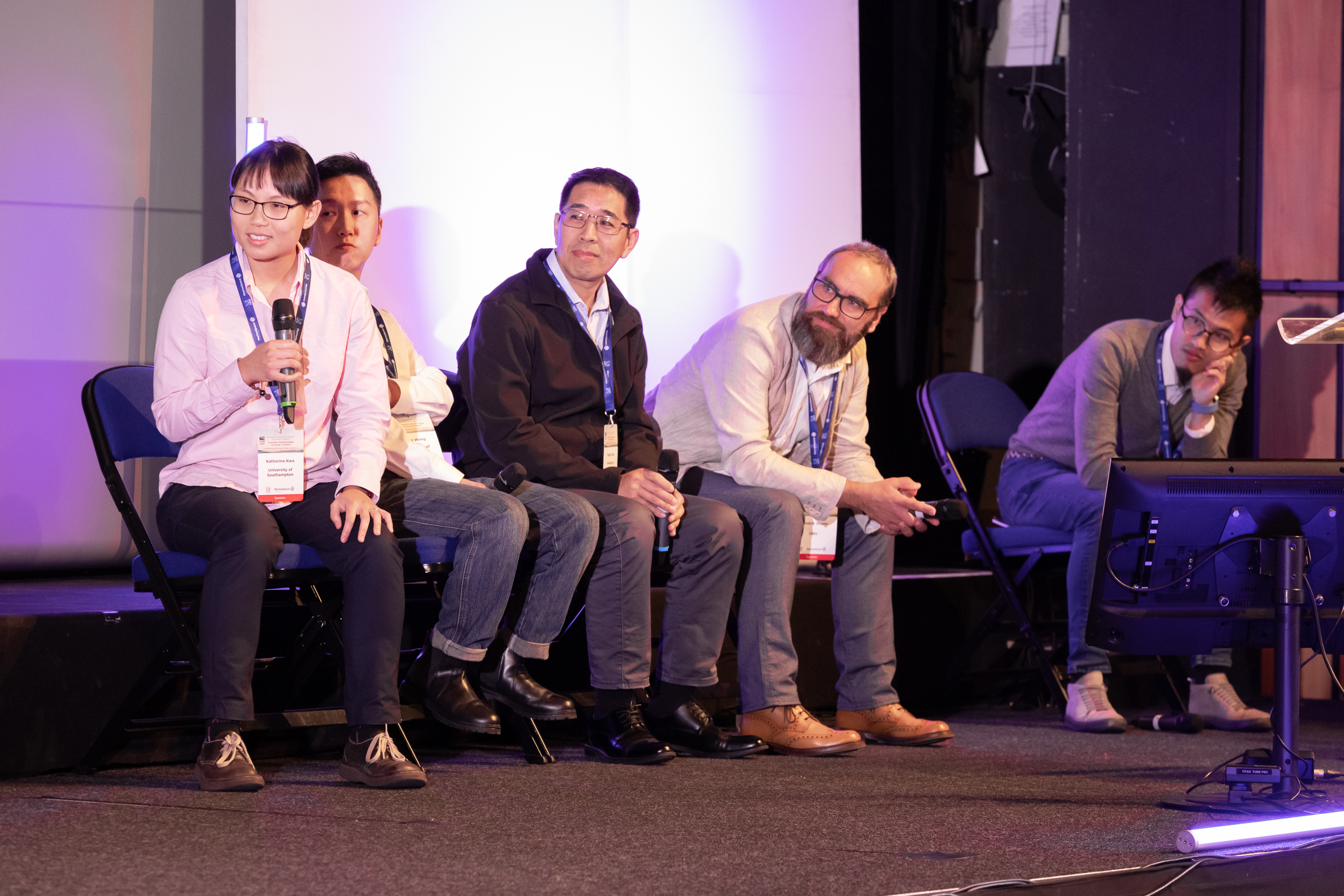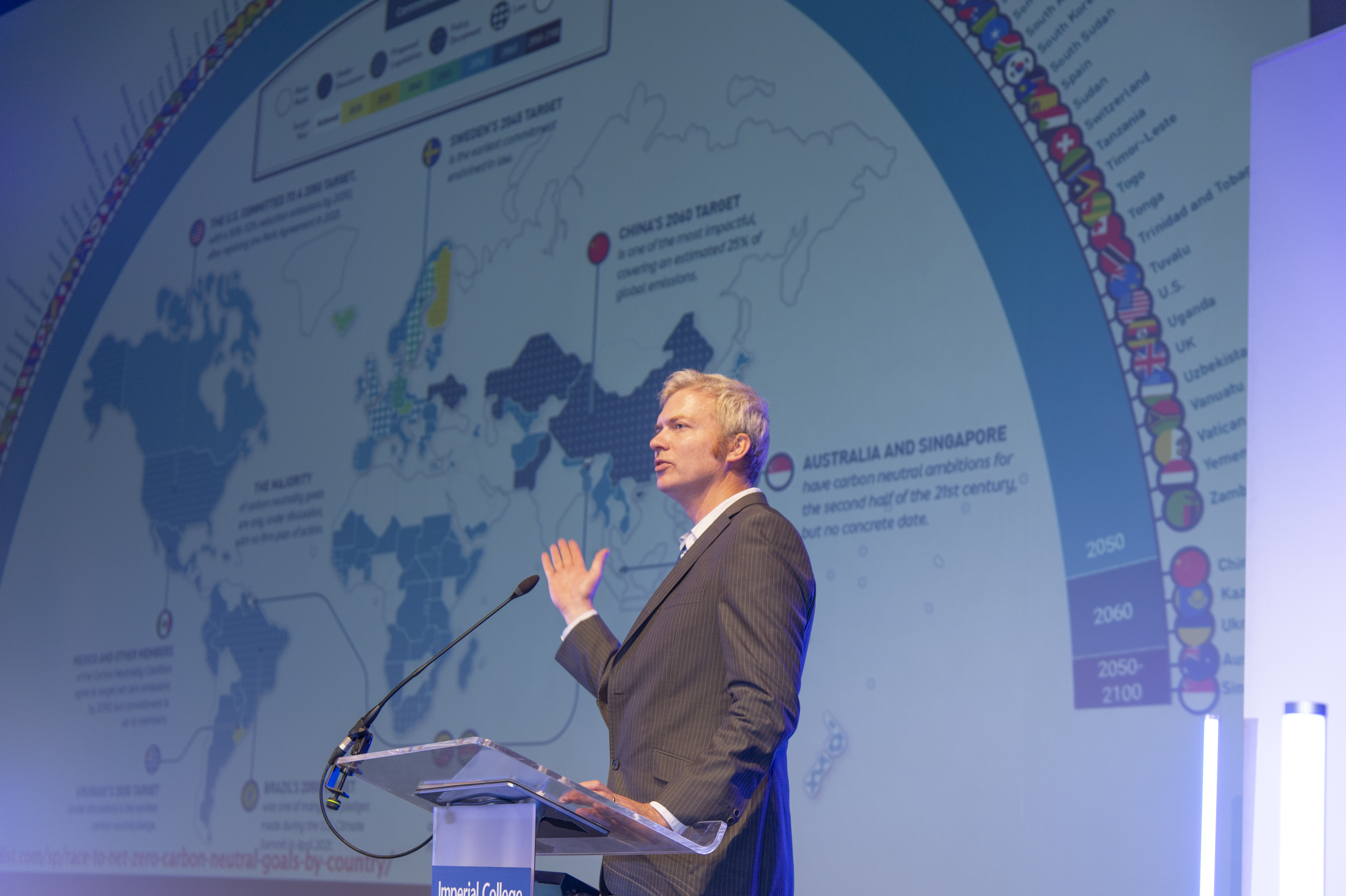Southampton team championing the energy transition at seabed-themed conference

The University of Southampton had a strong presence at the Society for Underwater Technology’s quadrennial conference on Offshore Site Investigation and Geotechnics, held in London in September. The theme was ‘Innovative Geotechnologies for the Energy Transition’ with 600 delegates listening to the latest technologies across geology, geophysics, and geotechnical engineering, with the primary application being offshore wind.
The Southampton team, drawn from Engineering, Ocean & Earth Science and m-vis, presented 8 papers, and co-authored several more, with topics ranging from the offshore wind growth needed to meet net zero, to the detailed challenges of foundation design and seabed characterisation. The wind growth for UK net zero was set out by Dr Hugo Putuhena using GIS-based studies, which quantified the ocean congestion and supply chain limits to be overcome. New techniques to help characterize the vast areas of seafloor needed for offshore wind were showcased by Dr Jared Charles, who applied new data science techniques to bridge between sparse in situ test data when building 3D seabed ground models, while PhD student Chrysoula Anastassopoulos, showed how synthetic site investigation can impact design outcomes. Prof Justin Dix’s presentation showed the influence of the fourth dimension – time – through a case study from the Dogger Bank of evanescent bedforms that could cause buried subsea cables to become exposed. Time was also the theme of a contribution co-authored by Prof Dave White and Dr Fernando Alvarez-Borges, which highlighted the strength recovery of the backfill material covering buried cables.

Several contributions demonstrated novel engineering technologies and analysis methods tailored to the particular needs of offshore wind. Dr Katherine Kwa and Dr Benjamin Cerfontaine set out innovative techniques for the installation and analysis of anchoring systems for floating wind farms. Prof Susan Gourvenec chaired a session focussing on foundation technologies, and Dr Kai Wen presented a new model for the response of foundations in chalk sediments. The Southampton team also co-authored papers on the ROBOCONE project, developing robotic subsurface characterisation tools.

Prof Dave White closed the conference as the invited rapporteur. In his speech he presented a ‘scorecard’ of progress through the energy transition on various metrics, and commented: “the recent news around UK offshore wind has shown that the amazing technologies evident at this conference are not sufficient to make the transition happen – we need to play our role in advocacy and education, beyond our day jobs, to ensure that the policy and business case are in place to unlock the upscale of offshore renewables to achieve net zero, as well as the technologies and innovations on show at this event.”
The activities of the Southampton offshore renewables team are supported through the Centre of Excellence for Intelligent & Resilient Ocean Engineering, Royal Academy of Engineering Chair in Emerging Technologies, Royal Academy of Engineering Research Fellowship, EPSRC, ORE Supergen Hub, and the Southampton Marine & Maritime Institute.